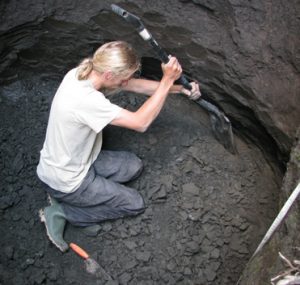Neanderthals sought – fish found
Dr. Ulrich Schmölcke
Due to a thick covering of Weichselian deposits, exposures of organic sediments from the last interglacial period, the Eemian, are rare across the entire Baltic Sea region. Consequently, the distribution and settlement density of Neanderthals in the area at that time is largely unknown. In order to find the possible first traces of Neanderthals in the Baltic, the Lithuanian National Historical Institute in Vilnius has, for a number of years, carried out surveys and excavations. In the course of these, Eemian lacustrine sediments were located by the River Nemunas, near the village of Netiesos. Although these gave no indications of early humans, animal and plant remains were recovered, which provide information about the Baltic landscape 100,000 years ago.

The development of the climate during the last warm period and thus the vegetation succession are largely consistent with Holocene conditions in Central Europe. However, it is well known from pollen studies that the climate of the Eemian was generally milder and more humid than in comparable periods of the Holocene, which is why a somewhat different fish species composition can also be expected. With the investigations of the fish remains from Netiesos, new scientific territory is entered, because from the Baltic and beyond from the entire northern European area only very sparse evidence of Eemian fish fauna is available so far.
Research clusters
Man and Environment
Research Priorities
–
Staff
Dr. Ulrich Schmölcke
In cooperation with
Dr. Gytis Piličiauskas (project manager), Lietuvos istorijos institutas, Vilnius, Lietuva